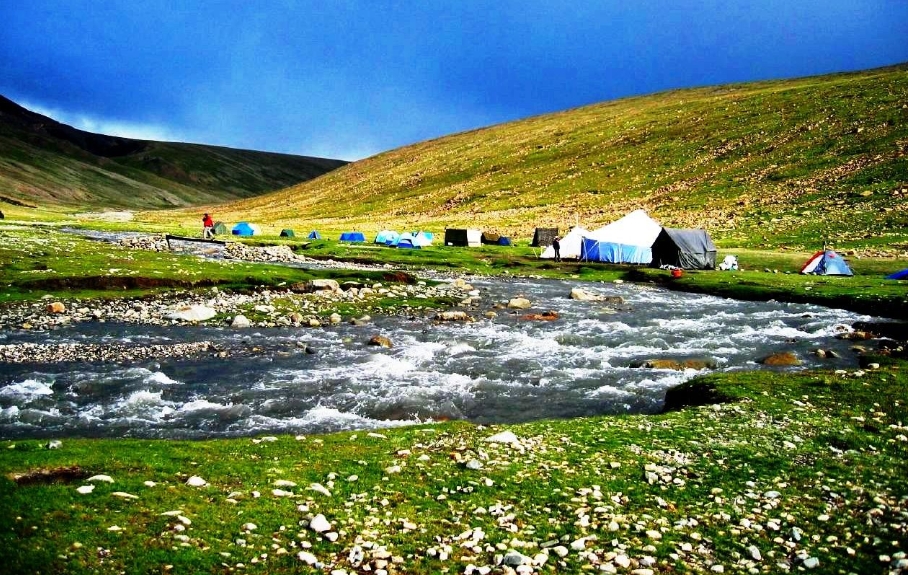Maximize Your Endurance With High-Altitude Training in Ladakh
On a Ladakh Trip, some people suffer from altitude sickness, and other problems related to low oxygen levels. Sometimes, it is tough to explore the finest beauty of Ladakh like Khardungla Pass and Parkachik La Pass Leh Ladakh. This is why, Hight-Altitude Training in Ladakh becomes important.
Ladakh, being a region of one of the highest altitudes in the world, offers an environment for those willing to push their physical limits. High-altitude training in Ladakh is all about enhancing your body’s strength and endurance and making your body adapt to lower oxygen levels. It benefits everyone, whether you’re an athlete or just a person seeking to reach your body’s potential, training in Ladakh can help you both to reach your goals. Let’s deeply understand this professional training, and we’ll also guide you on the best times to visit and essential preparations to make your training trip successful.
High-Altitude Training is Ladakh: Definition, Benefits & Types
1. What is Ladakh High-Altitude Training
High-altitude training is a special kind of training in which you are taught to survive in a lower oxygen-level environment.
Ladakh’s height from sea level ranges between 3000 – 6000 meters, which is why some travelers feel suffocated in Ladakh because of low oxygen levels.
So, when you train at high altitudes, your body slowly adapts to the environment and gets used to surviving easily with low oxygen levels.
You must have seen local Ladakhis never feel suffocated in those environments, it’s because their body is already used to those conditions.
This physiological adaptation can significantly enhance athletic performance when you return to normal levels, which is why some athletes prefer training in Ladakh high-altitude.
2. Benefits of High-Altitude Training
One of the primary and most important benefits of high-altitude training is that it improves one’s heart performance.
When you train at higher altitudes, your body increases the red blood cells, leading to improved oxygen circulation to the muscles and mind.
The increased red blood cells and improved oxygen delivery help repair muscles faster after intense workouts. So, athletes can train more frequently and with greater intensity without the same level of fatigue.
Secondly, it helps the body utilize energy more effectively because there is less oxygen in the environment.
The body becomes more efficient at utilizing oxygen, which improves overall energy production and delays fatigue.
Apart from that, if we talk about hikers and trekkers, then they also need this training before visiting the high altitudes of Ladakh.
This special training a few days before trekking can save your life when stuck in any do-or-die situation.
3. Types of High-Altitude Training
Strength Training
Having good mental and physical strength is the most important part of strength training.
This training in Ladakh includes weight training, resistance training, calisthenics or bodyweight training.
The main objective of this training is to unlock the strength potential of a body.
Endurance Training
While strength training focuses on generating power, endurance training helps to keep that power for a longer period.
This type of training focuses on improving cardiovascular(heart performance) and muscular endurance.
Running, walking, and cycling, are some of the exercises that are under endurance training.
Basically, anything that keeps your heart beating faster than usual for a long time is called cardio, which helps in the overall endurance of the body.
Altitude Acclimatization Training Programs
These programs are designed to help people adapt to the high-altitude environment.
It includes a combination of exercises and controlled breathing techniques for exposure to higher altitudes.
This Training in Ladakh is crucial for maximizing performance and minimizing the risk of altitude sickness.
4. Best Time for Training in Ladakh
Well, considering the extreme weather conditions of Ladakh, summer is the best time for any kind of training in Ladakh.
May -September is ideal, and don’t worry about the rain. Ladakh is a cold desert and there’s minimal rainfall there, almost negligible.
Most of Ladakh’s training camps operate during this time only because of the extreme weather conditions in other months.
Many training camps offer everything from accommodation, food, and other training essentials, while other only offers training guidelines, so enquire accordingly.
5. Essential Preparation for Your Training in Ladakh
When planning your training trip to Ladakh’s Training Camps, it’s essential to pack appropriately.
Ladakh is a cold region, so bring thermal layers even if you’re visiting in the summer months.
As discussed earlier, some Ladakh training camps, provide all the essentials, like training gear, accommodations, and food, but some only provide training, so packing accordingly is important. However, the training charge differs accordingly.
So, high-quality training gear like good comfortable shoes, sun protection, and all other essentials are really important.
Talking about health precautions, then because of Ladakh’s chilly weather, people often forget and ignore the importance of hydration.
Because of the sudden increase in altitude, some suffer from altitude sickness.
So, ensure you are well-hydrated and take the time to acclimatize to the high altitude to avoid altitude sickness.
Although you can get medical facilities in Ladakh, you should carry a basic first-aid kit with you.
However, you should always consult a doctor before going for these types of training.
Conclusion:
High-altitude training is very important for anyone who is into athletics or wants to improve their physical and mental strength and endurance. By this, you can push your limits and achieve new levels of performance, not only on professional levels but also on personal levels.







